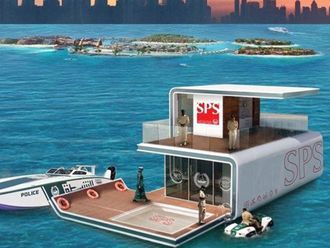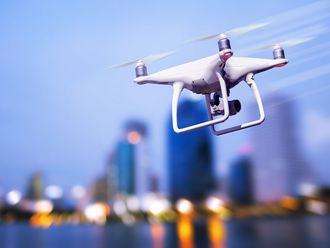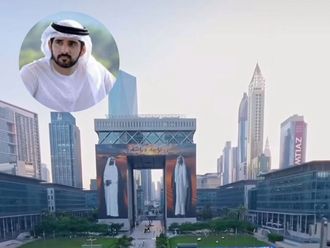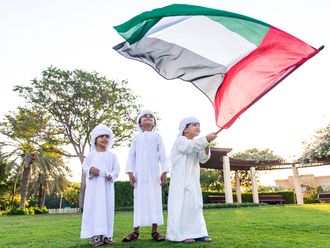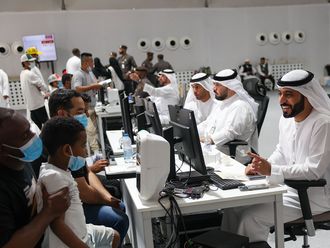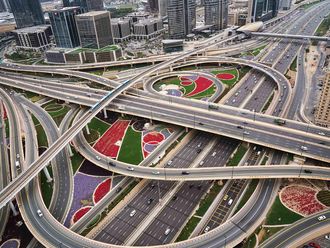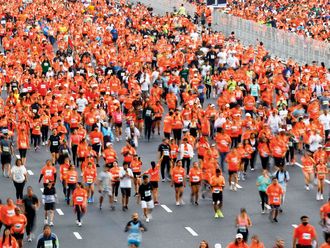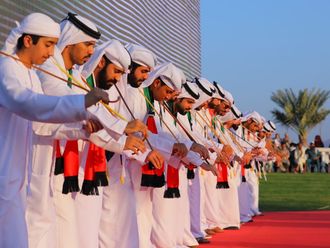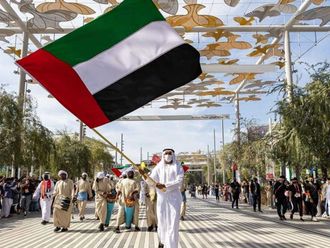From humble beginnings as a service for the Bedouin community, the Oasis Hospital in Al Ain has become synonymous with high-quality service while also remaining sensitive to the local culture and tradition.
Oasis Hospital has become synonymous with high-quality service while remaining sensitive to the local culture and traditions. ©Gulf News |
Dr Pat Burwell Kennedy and his wife Dr Marian Kennedy established the hospital in 1960 at the invitation of President His Highness Shaikh Zayed Bin Sultan Al Nahyan, then governor of Al Ain, and his brother, Shaikh Shakbout Bin Sultan Al Nahyan, then ruler of Abu Dhabi.
Also known as Kennedy Hospital, this was the first of its kind in the emirate of Abu Dhabi and, true to the city's name, proved to be an oasis of health for the local tribes.
Oasis Hospital now caters to a third generation of patients.
Shaikh Zayed provided a plot of land for the hospital, and both doctors, who came from Jordan, helped the local population at a time when the infant mortality rate in the area was extremely high.
Oasis Hospital offers a complete range of treatment through its 12 clinics that specialise in - among other areas - family care, paediatrics, parental care, diabetes treatment, surgery and internal medicine. The hospital also has a 24-hour emergency clinic.
The facility also specialises in obstetrics, gynaecology, infertility treatment, gastroscopy and colonoscopy.
The child care and maternity services, however, are a priority at the hospital. Many UAE nationals prefer to pay for medical care at Oasis Hospital when they could receive free treatment at government hospitals, the management said.
Over the years, the hospital's maternity clinic has made a name for itself and its reputation has grown.
Today, the maternity clinic sees more than 2,000 births each year from the national community.
"We are proud of our heritage, our humble beginnings and the relationships formed in those early days that are the very reason for our existence," said Jan Stokes, the hospital's chief executive.
When the hospital opened, the population of Al Ain, including that of all the surrounding villages, was approximately 2,000, with population growth virtually stagnant.
The infant mortality rate was at a high of 50 per cent and the maternal mortality rate was about 35 per cent. The doctors at the hospital knew that Arabs believe in having large families, but surprisingly there were only two or three children per family in Al Ain.
As word of the hospital spread, people began coming here to have their babies.
By 1970, some 5,523 deliveries had been performed at the hospital.
Oasis Hospital remained popular even with the opening of the first government hospital in the late 1960s. In the 1970s, 20,519 babies were born here, while in the next five years, from 1980 to 1985, the hospital saw another 13,088 babies delivered.
Gertrude Duck, a long serving Canadian paramedic at the hospital who retired a few years ago, was a highly respected figure in Al Ain and was known for her dedicated services. She is better known as Doctora Latifa.
She played a vital role in reducing the mortality rate for both mothers and babies. She received the highest Canadian civil award, The Order of Canada, in recognition of the health care services she provided to the people of Al Ain for more than 40 years.
Last year, Doctora Latifa received yet another prestigious honour from the Canadian government, the Queen's Jubilee Medal for her services in the UAE.
Recalling those early days, Stokes spoke of the extremely limited medical facilities and lack of equipment. Neither did the patients know how to pay for these services.
"Most of them had no money to pay for medicines or services. Consequently, they used the only thing they knew - bartering."
Patients paid their bills with eggs or chicken.
Later, Shaikh Zayed and Shaikh Shakbout devised a system to solve the problem. A paper slip called burwa carrying the stamp of the Shaikhs' signet ring was introduced that authorised the hospital to treat the patients on their account.
Narrating an interesting snippet of information, Brooks A. Glett, a senior hospital executive, said the hospital also served as a veterinary clinic. The people figured what was good for them was good enough for their animals.
Often the hospital staff were sent to treat animals with penicillin. The doctors also operated on camels and goats, and assisted with difficult deliveries.
Brooks said Bedouin families travelled long distances on their camels for treatment at the hospital. They usually set up camp under the trees surrounding the hospital and cooked food on open fires. They often shared their freshly baked bread with hospital staff.
Esther Poon, an executive at the hospital, said the facility has always respected the Arab culture by allowing flexible visiting hours and not restricting visits by children.
"Families and their visitors are also allowed to bring their own meals or cook whatever they want in the designated areas and bring food into their rooms," she said.
The hospital constructed its first building on the original site in 2000 and named it Shaikh Zayed Majlis. The project, which was planned by the hospital, was later sponsored by Lt. General Shaikh Mohammad Bin Zayed Al Nahyan, Deputy Crown Prince of Abu Dhabi and Chief of Staff of the UAE Armed Forces.
The Majlis now serves as the hospital's main entrance and is also used as a display centre for artifacts and photographs of the early days of Al Ain city and its surrounding areas.
Stokes said the hospital has a master plan for rebuilding its facilities in the next five years. "We have started working on the plan and fund-raising initiatives."


